The Funky Seventies was a decade of sartorial shake-ups, where men’s fashion ditched the buttoned-up conservatism of the past and strutted into a world of bold self-expression. With disco balls spinning, punk rebellion brewing, and bohemian vibes still lingering, style became as diverse as the dance floors and dive bars of the era. Flared trousers, loud patterns, and electric colors turned everyday outfits into personal statements, but it was the accessories that really made a look pop. No longer just afterthoughts, they became the groovy finishing touches—symbols of scene, swagger, and individuality. So, slip on your platforms, throw on those tinted shades, and join us as we dig into the 12 most Iconic Men’s Fashion accessories of the 1970s—pieces that defined an era and still carry their funky charm today.
Wrist cuffs and leather bracelets:

In the 1970s, wrist cuffs and leather bracelets emerged as gritty style staples, fusing bohemian rock cool with punk aggression. Wide, studded, or hand-tooled, they belonged to men who rejected polish for raw authenticity. Keith Richards made them part of his Rolling Stones swagger, layering them with necklaces and gypsy shirts. By decade’s end, Johnny Rotten and Topper Headon of The Clash turned studded cuffs into punk armor, worn with ripped shirts and safety pins. While not yet mainstream, they were powerful symbols of rebellion—laying the groundwork for the massive bracelet boom of the 80s and beyond.
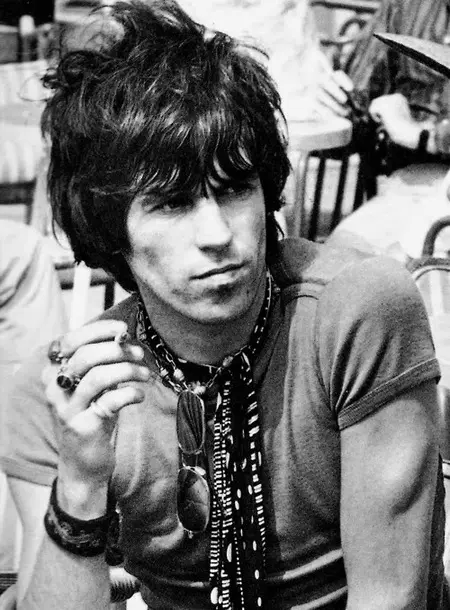

Bold and Elegant Sunglasses
The 1970s made sunglasses larger-than-life, with tinted or gradient lenses framed in oversized metal or plastic. They weren’t just for shade—they became fashion masks, part shield, part statement. No one embodied this better than Elton John, who elevated sunglasses into an art form, donning flamboyant star-shaped, heart-shaped, and rhinestone-studded frames throughout his concerts and public appearances in the early 70s. His 1973 Goodbye Yellow Brick Road tour immortalized him as the undisputed king of bold eyewear, proving sunglasses could be theatrical extensions of personality rather than mere functional items.
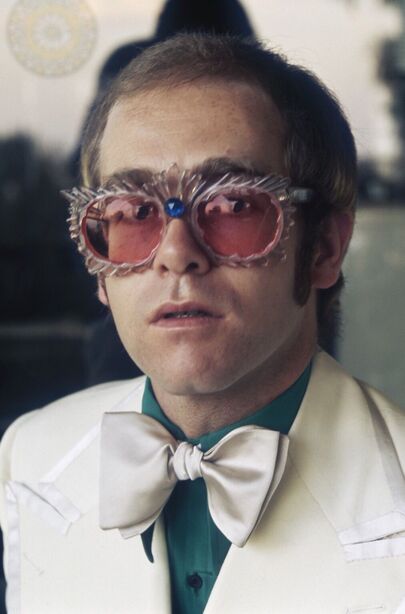
Mood Rings
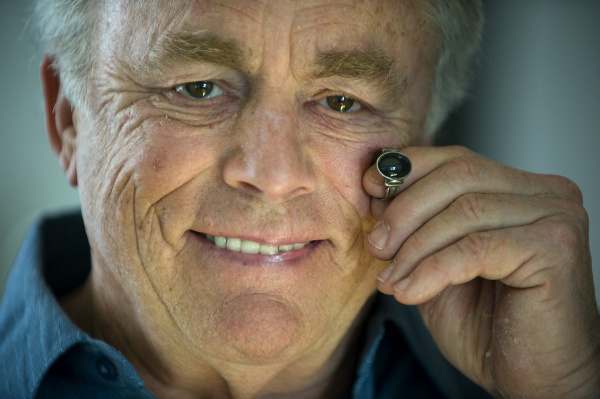
Invented in 1975, mood rings were set in simple silver bands with thermochromic liquid crystals that shifted color with body temperature, supposedly reflecting emotions. They became instant cult accessories among bohemians and the spiritually curious. While kitschy, they embodied the 70s fascination with self-expression and mysticism. David Cassidy, teen idol and star of The Partridge Family, was photographed wearing mood rings during fan meetups in the mid-70s, fueling their pop culture presence. For men, the mood ring was less about status and more about belonging to an era that celebrated feelings, vibes, and cosmic energy in jewelry.
Joshua Reynolds, 1975 — While not a performer, Reynolds’ invention of the mood ring became a cultural sensation, worn by teens and celebs alike during the wellness craze. image source
Medallions and Gold Chains.
Thick gold chains paired with large medallions became the unofficial jewelry of disco masculinity. Structured as heavy rope or link chains, often with zodiac or cultural pendants, they were worn over unbuttoned shirts, glinting beneath the nightclub lights. Rober Redford (One of the Fashion Icons of the 1970s) wore a medallion and a gold chain. These accessories became shorthand for confidence, sensuality, and urban glamour. In the 70s, a man’s medallion wasn’t just jewelry—it was a declaration that he was alive, unafraid, and ready for the disco floor.
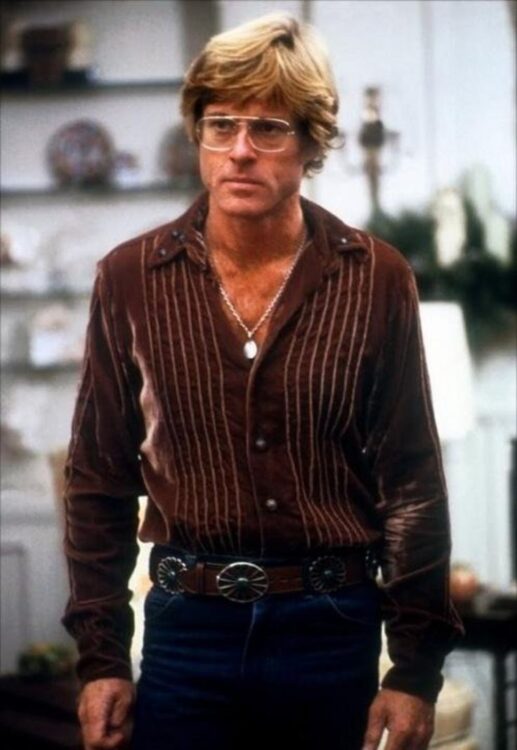
Platform Shoes and Boots with Stacked Heels:
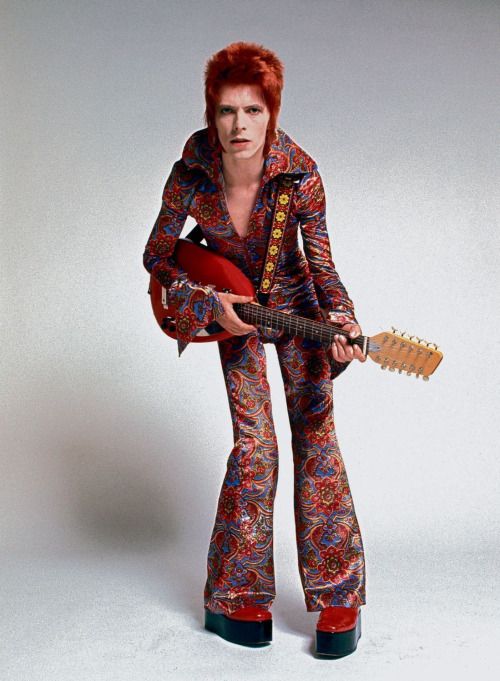
Platforms defined the very soul of 70s daring—thick soles, stacked heels, often in patent leather, suede, or glittering finishes. They made men literally taller, but also symbolically larger-than-life, striding into disco halls or concert stages. David Bowie, during his Ziggy Stardust era (1972–73), wore red leather platform boots with towering heels, turning footwear into an alien-glam spectacle. By mid-decade, platforms became mainstream, worn in clubs from Studio 54 to London discos. Loved for their flash and hated for their danger, platform shoes were the risky double-edged sword of 70s masculinity: height, style, and flamboyance balanced on thick soles.
Silk Scarves and Neckerchiefs.
Soft silk scarves or knotted neckerchiefs replaced stiff ties for stylish men of the 70s. Whether draped loosely or tied ascot-style, they brought softness, fluidity, and color to men’s wardrobes. Rock stars championed them—Mick Jagger often wore silk scarves on stage in the early 70s, pairing them with velvet jackets and tight trousers, infusing bohemian flair into rock ‘n’ roll. These scarves framed faces, caught stage lights, and fluttered with movement. Part accessory, part attitude, they symbolized the decade’s rejection of rigid masculinity in favor of sensual, flowing, androgynous style. A scarf in the 70s was pure swagger. image source

Headbands

A strip of fabric—sometimes leather, sometimes cloth—worn across the forehead, the headband became an emblem of rebellion and counterculture. Popularized first by hippies, it shifted into rock and sports fashion. Willie Nelson, though late 70s in origin, set the template with his iconic headbands. By mid-decade, headbands became both practical (keeping sweat at bay in concerts or sports) and symbolic of anti-establishment style. Musicians and athletes alike made them icons. The headband in the 70s wasn’t just about hair—it was a crown of freedom, defiance, and groove.
Puka Shell Chokers or Necklaces
Strung from small white shells, puka shell necklaces epitomized 70s beach culture, simple in structure yet powerfully symbolic of laid-back masculinity. Originally Hawaiian in tradition, they exploded into global popularity as surfers and hippies adopted them. Greg Brady (Barry Williams) of The Brady Bunch famously wore puka shells on the show in the mid-70s, immortalizing them as teen cool. They paired effortlessly with open shirts and suntans, symbolizing an oceanic, natural energy. A puka necklace meant you weren’t just stylish—you were connected to surf, sand, and a free-spirited, barefoot version of manhood that defined 70s leisure. David Cassidy, 1970 — Wore white puka shell chokers on The Partridge Family and concert tours, sparking a global trend. Image Source
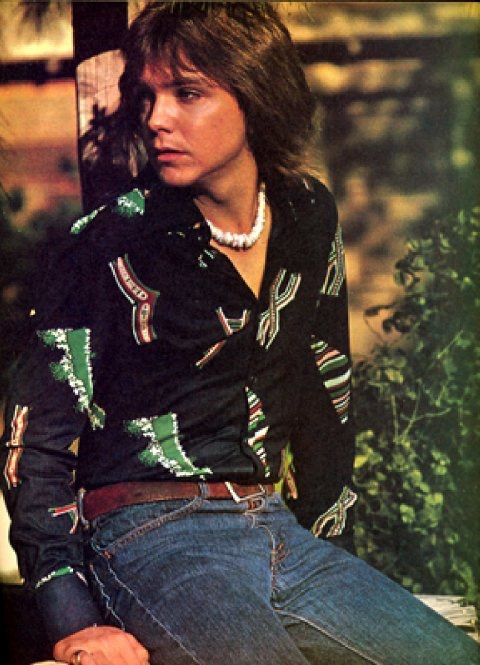
Wristbands.
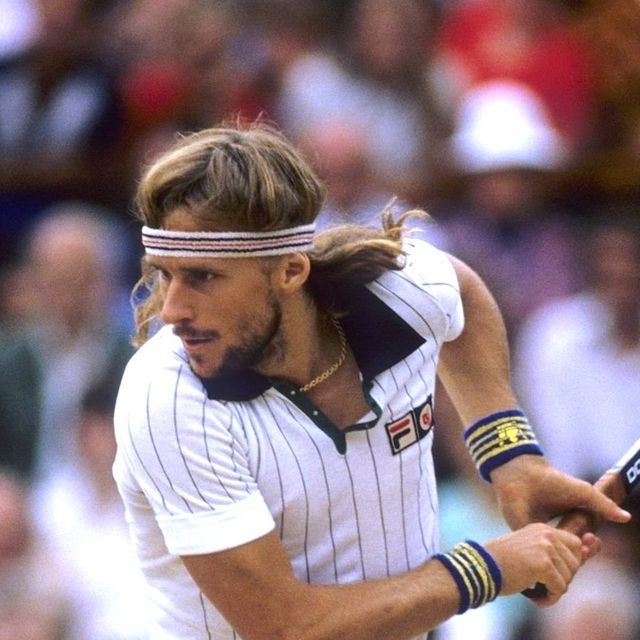
In leather, terry cloth, or metal, wristbands became versatile accessories of the 1970s. Leather wristbands, often wide and studded, were embraced by rockers and bikers, while terry sweatbands found their way from tennis courts to disco floors. Björn Borg, the Swedish tennis superstar, made terry cloth wristbands iconic during Wimbledon in the late 70s, blending sport with style. Meanwhile, rock bands like Led Zeppelin embraced leather cuffs on stage. Wristbands symbolized either rugged masculinity or sporty chic, depending on the wearer. In the 70s, the wrist wasn’t bare—it carried either athletic glory or rock ‘n’ roll grit.
Wide Leather Belts and Big Buckles
Belts in the 70s were unapologetically bold—often two inches wide, crafted from leather or suede, and finished with gleaming oversized buckles. These buckles ranged from geometric shapes to initials and even novelty designs. Elvis Presley, in his 1970s Las Vegas shows, famously wore dazzling jumpsuits cinched with gigantic jeweled belts, making his waistline a glittering centerpiece. Off-stage, flared trousers and tucked-in shirts demanded a statement belt. This accessory turned functionality into flamboyance: the buckle wasn’t just fastening fabric, it was a centerpiece of male style. Belts in the 70s didn’t hide—they shouted. Robert Redford, the celebrated Hollywood star, often sported wide belts with bold metallic buckles, pairing them with his signature hats adorned with striking hatbands—an effortlessly rugged look that always invited a second glance.
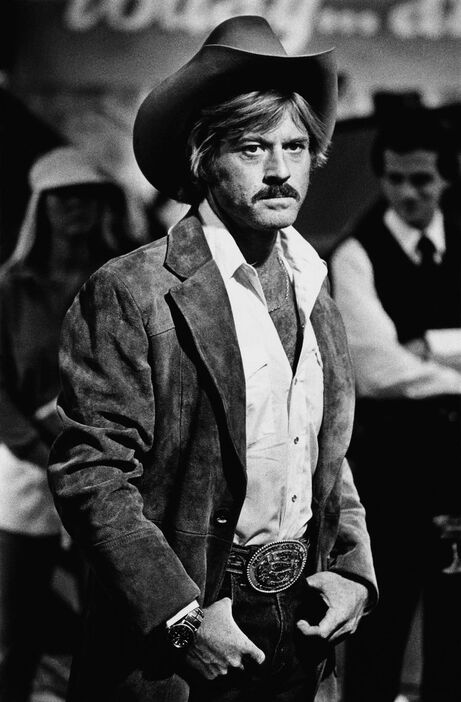
Concho Belts
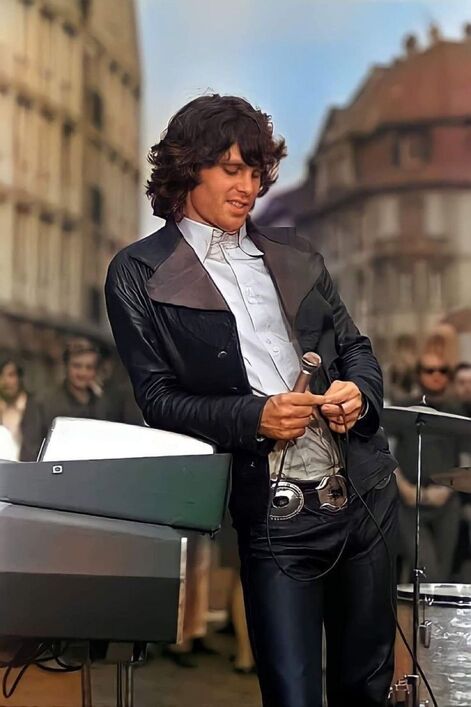
Concho belts, with their leather straps adorned with engraved silver discs (sometimes turquoise-inlaid), originated with Navajo and Zuni artisans in the late 19th century. In the 1970s, they surged into mainstream fashion with the Southwestern revival, complementing suede jackets, turquoise rings, and desert-toned outfits. They were particularly beloved in bohemian and festival style. Robert Redford, long an ambassador of Western aesthetics, sported concho belts and Native-inspired accessories in the early 70s, especially around the release of Jeremiah Johnson (1972). For men of the decade, the concho belt was heritage reimagined—an ethnic jewel turned counterculture chic. Jim Morrison famously wore a concho belt, and it became one of his most iconic style signatures during the late 1960s and early 1970s. The belt he wore was crafted by Joe H. Quintana, a renowned Navajo silversmith.
Automatic Chronograph (Chronometric Watches)
The 1970s turned the self-winding chronograph into a status accessory—muscular cases, racing dials, and steel bracelets that paired perfectly with wide collars and leather driving gloves. The look was immortalized when Steve McQueen wore the square-cased Heuer Monaco 1133B in Le Mans (1971)—widely photographed. On the track, Niki Lauda favored a Heuer Autavia automatic during his mid-70s F1 dominance, a fixture in paddock shots. In space, astronaut William “Bill” Pogue wore the yellow-dial Seiko 6139 on Skylab 4 (1973–74)—iconic images exist. Beloved by racers, pilots, and executives, the automatic chrono fused precision and bravado—an unmistakable 70s wrist signature. image source

Conclusion
The 1970s was a decade when men’s accessories stopped being afterthoughts and became declarations of identity. From Elton John’s flamboyant sunglasses to Travolta’s disco medallions, from Bowie’s towering platforms to Redford’s concho belts, each piece told a story of daring, reinvention, and cultural crossover. These weren’t just embellishments—they were extensions of personality, signals of belonging, and symbols of rebellion. Some accessories faded, others evolved, but together they defined a bold era where style was loud, soulful, and gloriously unapologetic. The 70s taught men that fashion wasn’t just worn—it was lived.

